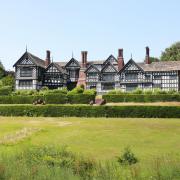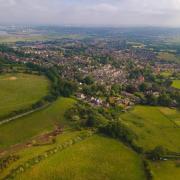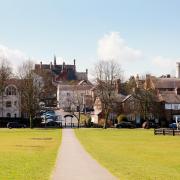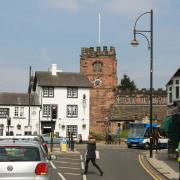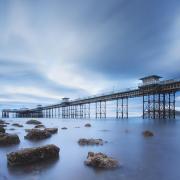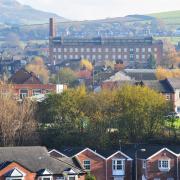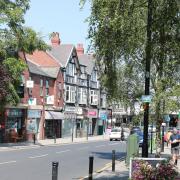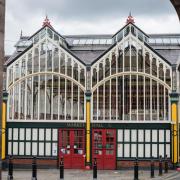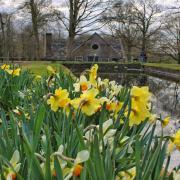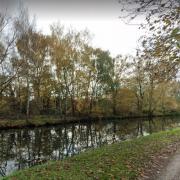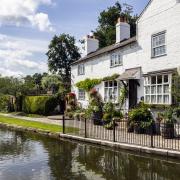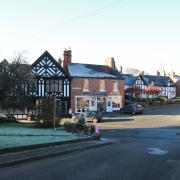Farnworth? Surely that's a town near Bolton in Lancashire? Residents of this attractive village near Widnes often hear that question. WORDS BY HEIDI NAGAITIS PHOTOGRAPHY BY JOHN COCKS
Farnworth could be described as the quintessential Cheshire village, with its picture perfect location and unusual history. However, like many others in the county, Farnworth has its fair share of trials and tribulations, including the loss of its legends and traditions. Now a group of local volunteers is fighting back to protect the history of the Widnes suburb and encourage a new generation to move to Farnworth.
Farnworth, which in Anglo-Saxon, translates to Fern Farm, was originally part of Lancashire, but in 1974 formed part of the new borough of Halton in Widnes. The village has been a known location to Lancastrians and Cheshire folk alike for hundreds of years. The earliest documented evidence dates from 1352 when Henry, Duke of Lancaster, established a court for the Manor of Widnes.
The lengthy lifespan of this village means it’s brimming with lively stories and beautiful buildings which Phil Balmer, a former local councillor, Alan Foster, a local historian, Ann Marsh and Jean Wallace are campaigning to protect.
Phil Balmer said: ‘Although we’re only a small group, we’ve been residents in Farnworth for many years and are truly passionate aboutthis suburb and its inhabitants.
‘As members of the Widnes Historical Society, we feel it’s so important to protect such a fantastic place and encourage people to be as enthusiastic about Farnworth as we are.’
The group has already been hard at work, promoting the village andits history and have recently succeeded in erecting some new information signs, made by the team and local volunteers, around Farnworth.
‘Halton Borough Council has allowed us to erect some location plaques in the village, which help to educate long-time residents and “newcomers” about Farnworth’s past, ‘ said Phil.
‘It’s vital that these signs are used so that anyone can learn about thehistory of Farnworth whether they’re a resident out for a stroll or a visitorjust passing through.’
Information which graces these signs includes the legend of the Griffin, a yarn which allegedly gave Farnworth’s nobles their family name. The story says that a local blacksmith, named ‘Bold’, killed a Griffin which had been terrorising the village. The blacksmith went on to become the local lord and the Griffin was incorporated into the family’s coat of arms.
The historical significance of the village is not to be challenged, withformer residents including Bishop William Smyth (1460-1514) cofounderof Brasenose College, Oxford. Another famous inhabitant was Richard Bancroft (1544-1610) who became the Archbishop of Canterbury and Chief Overseer of the Bible, a task which allowed the holy book to be printed and become a text which could be read by the masses.
Phil said: ‘Other influential residents included Roy Chadwick (1893-1947) who was the creator of 35 different aircraft, including the Lancaster and Vulcan Bombers and Andrew Poulson (1846- 1931) who first discovered the carbon dioxide process in the cellar of Hope House, a building which still stands today.’
One of Farnworth’s most famous occupants was Alfred Mond (1868-1930) the co-founder of Imperial Chemical Industries, better known as ICI. MrMond and his family lived in the village for many years while runningthe company and, due to its success; Alfred went on to become Ministerfor Health.
Farnworth is also famed for its buildings, which local historian, Alan Foster, has documented in his book ‘A walk around old Farnworth Village past and present.’ Included is one of the oldest buildings in the village, St Luke’s Church.
Dating from 1180, the church is architecturally understated, but hassome remarkable features, including a sham bookcase which was thought to lead to a secret passage. Outside the building stands an Anglo-Saxon cross, which is said to be the Farnworth’s oldest artefact.
Phil said: ‘The team have ensured that the historic buildings are protected, most recently renovating the Bridewell (1100) which was dueto be demolished. There is such strong community spirit in Farnworth, which has meant the history of the town has been well preserved.’
This kinship dates back generations, when the town was known for the Farnworth Wakes, a three day event filled with bear and bull baiting, races, pig chasing and general merriment!
Phil said: ‘As well as the historical importance of the town, the peoplein this area are the friendliest I have ever known, they truly epitomisethe idea of a strong and caring community.
History oozes out of this village, you only have to scratch the surface, but as a community we offer so much more, so come and taste the Farnworthspirit!’




